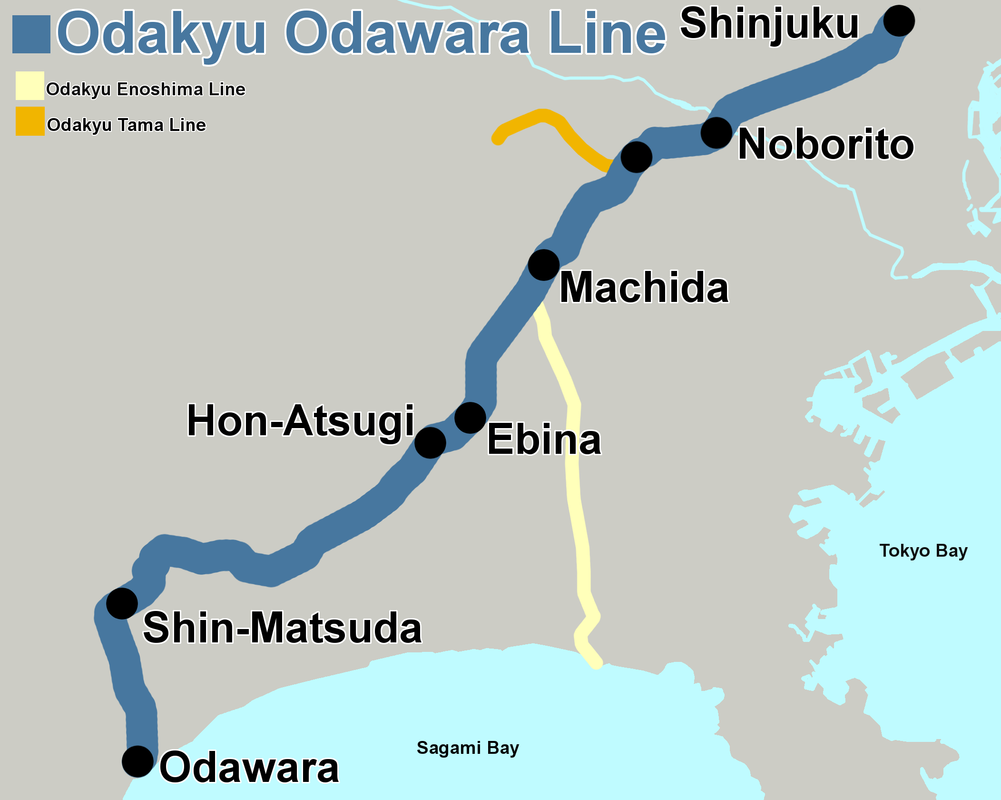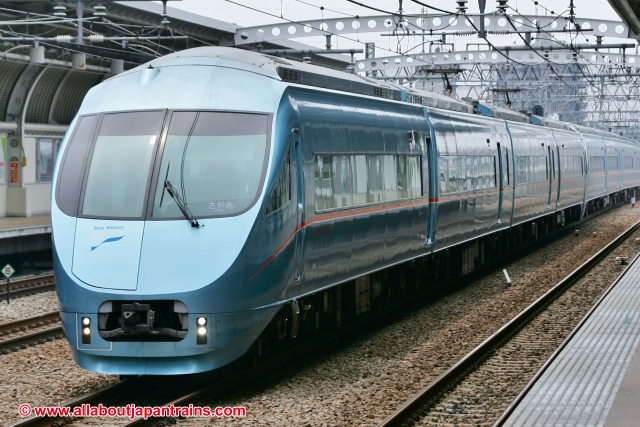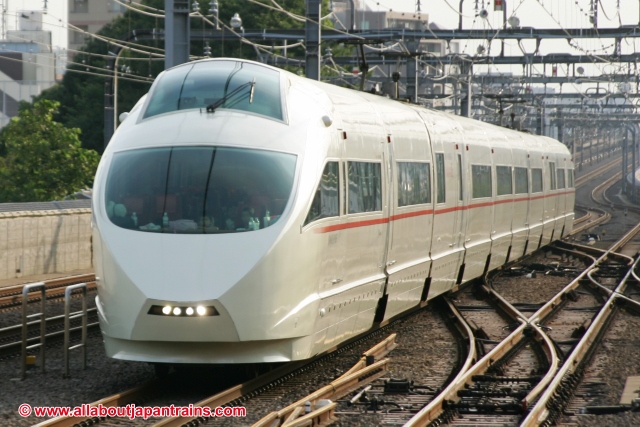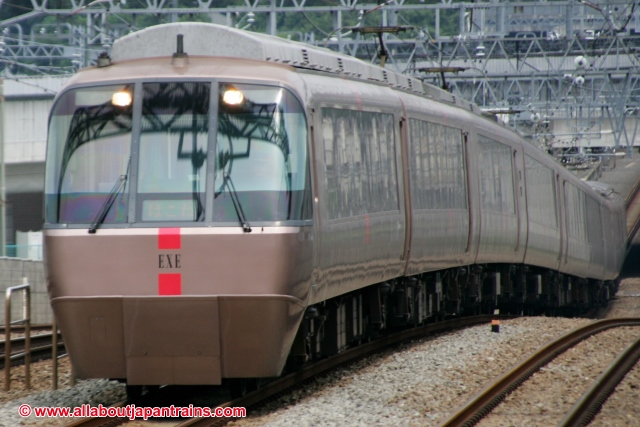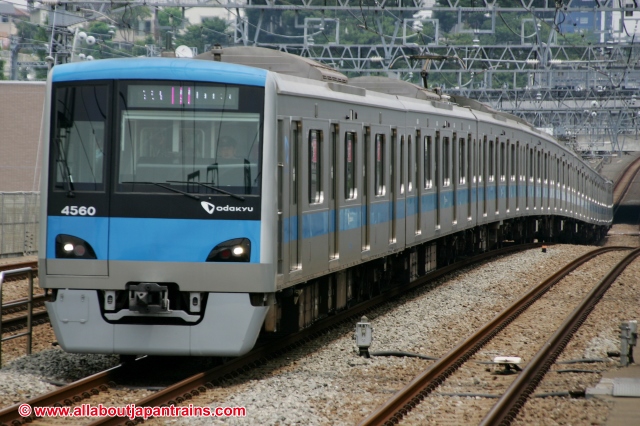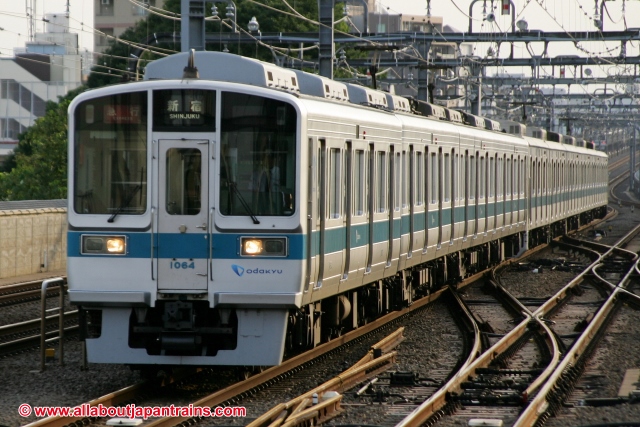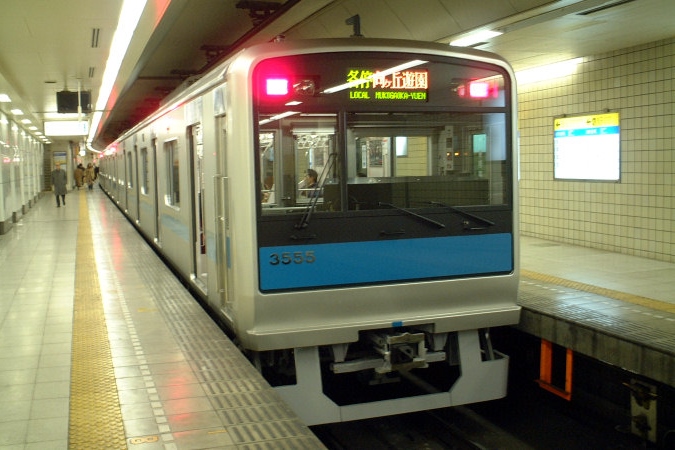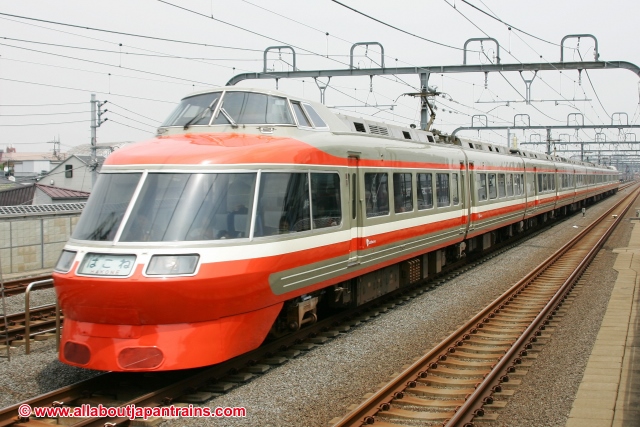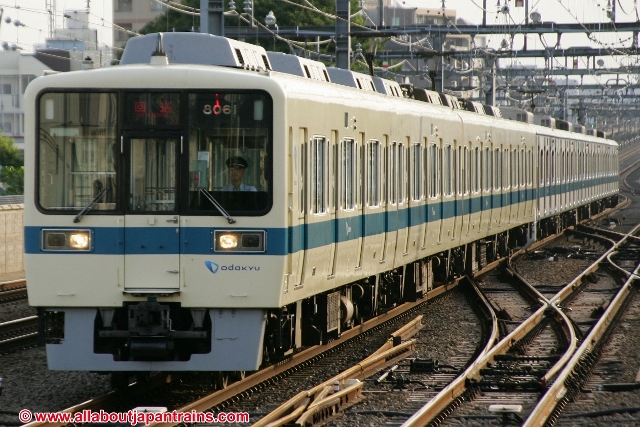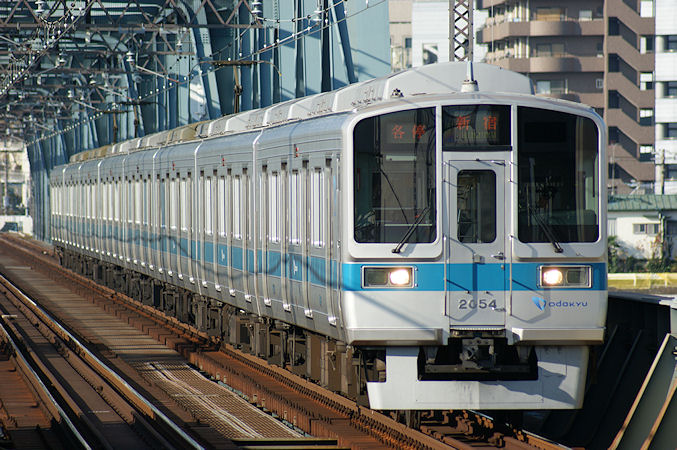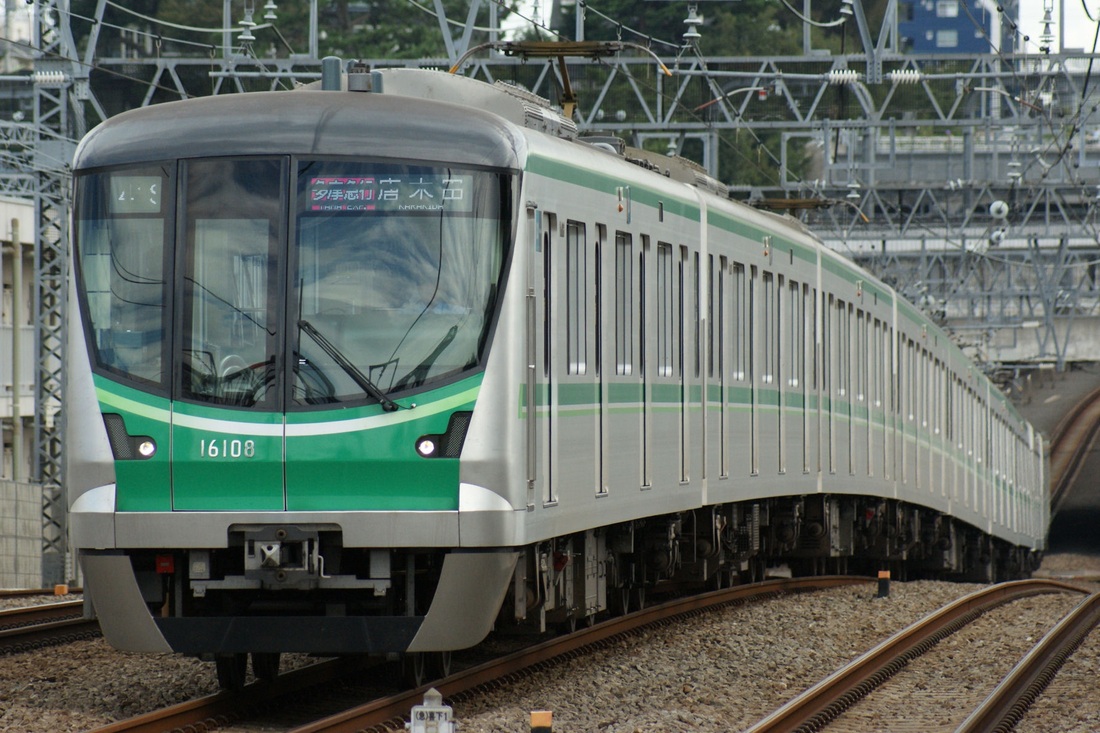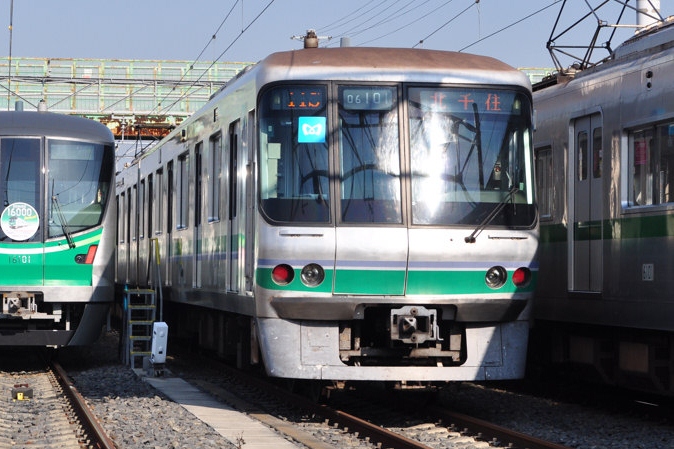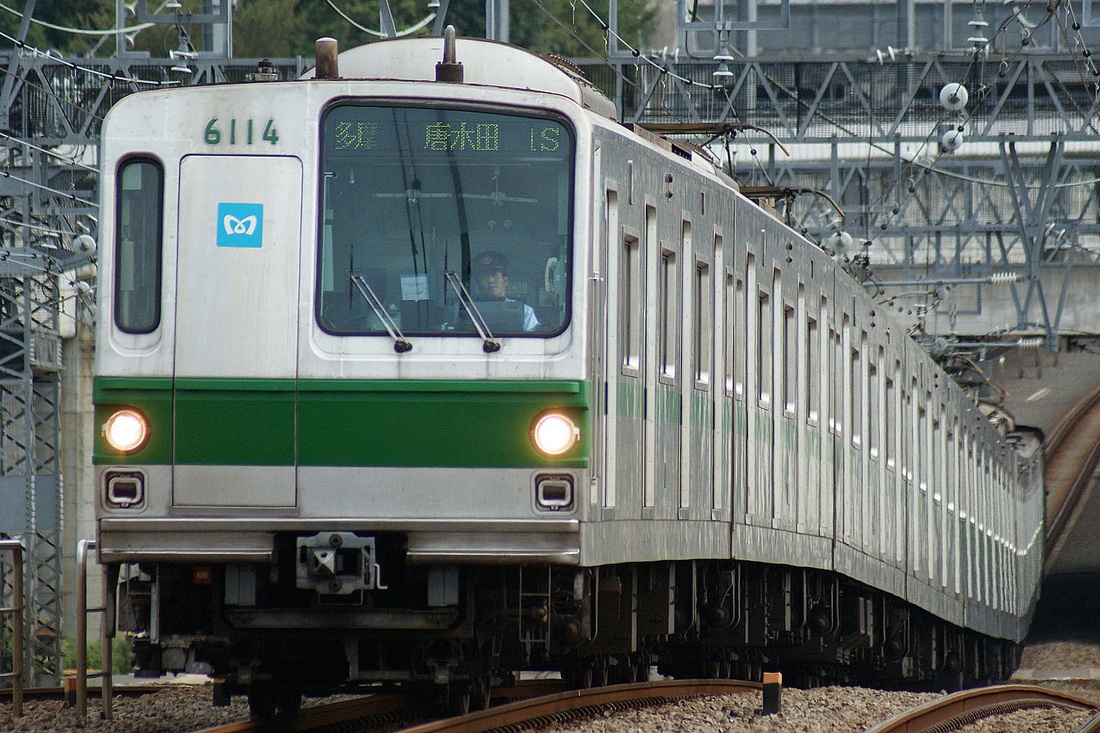|
Length: 82.5km
Stations: 47 Gauge: 1067mm (Narrow) Electric system: 1500v DC 60000 Series "MSE"50000 Series "LSE"30000 Series "EXE"Odakyu TrainsTokyo Metro Trains16000 Series4000, 2000 and 06 Series photos courtesy of Uraken.net
16000 and 6000 Series photos courtesy of Railstation.net |
Odakyu Odawara LineThe Odakyu Odawara Line is a major commuter line that connects Odawara City in Kanagawa Prefecture, with Shinjuku Station in Tokyo. The Odawara Line is one of the three most crowded lines in Eastern Japan, up there with the Tokyu Denentoshi Line and Tokyo Metro Tozai Line. At its worst, crowds reach up to 192% according to studies done by the Ministry of Land, Infrastructure and Transport.
The name Odawara Line comes from Odawara Station, the western terminal of the line. It passes through many of Tokyo's suburbs and serves as one of the most important commuter lines in the Kanto region. Construction of the Odawara Line began in the autumn of 1925 with all 82km of it being completed by April 1, 1927. Odakyu and the Odawara Line faced financial trouble during the great depression, but in 1942, both were absorbed into what is now the Tokyu corporation. Odakyu managed to achieve its independance in 1948 and the Odawara Line once again became the Odakyu Odawara Line. Although the official terminal of the Odawara Line is Odawara Station, Odakyu has been providing direct service through to the Hakone Tozan Railway Line since 1950. One of the most well-known features of the Odawara Line is the Romance Car limited express trains that connect Shinjuku Station with Hakone-Yumoto Station, a popular tourist destination. These limited expresses have been the stars of Odakyu since the introduction of the revolutionary 3000 Series "SE" train in 1957. They continue to carry passengers to and from Hakone in style with newer designs such as the 60000 Series "MSE" and 50000 Series "LSE." Odakyu provides many different regular trains on the Odawara Line which can make riding it complicated for first time visitors. It's best to check which trains stop at which stations before jumping on any train. All Odakyu Lines branch out from the Odawara Line and can therefore be accessed from Shinjuku Station. Always check the last stop of each train to know if any certain train will branch off or not. The Odawara Line connects with the Tokyo Metro Chiyoda Line at Yoyogi-Uehara Station. Tokyo Metro trains switch to the Chiyoda Line at this station and do not stop at Shinjuku Station. Also note that some Odakyu Trains provide direct service through to the Chiyoda Line. Major StationsShinjuku Station
Shinjuku is the eastern terminal of the Odawara Line and also the single most crowded station in the world. Odakyu's Shinjuku Station is separated from JR Shinjuku Station by ticket gates, but with the near insane amounts of passengers on the line during rush hours, it is still a madhouse. You can transfer to the JR Chuo Rapid, Chuo Sobu, Saikyo and Shonan-Shinjuku Lines. The limited expresses Azusa/Super Azusa, Kaiji, Narita Express, Nikko and Kinugawa stop at Shinjuku Station. You can also transfer to the Keio, Toei Shinjuku and Ooedo and Tokyo Metro Marunouchi Lines here. Note that Seibu also owns a Shinjuku Station, but it is separated entirely from JR and Odakyu's Shinjuku Station. Odawara Station Odawara Station is the western terminal of the Odawara Line and also its namesake. Odawara City has long been an important part of traffic to and from Tokyo and continues that role even today. You can transfer to the Tokaido Shinkansen at Odawara Station as well as the JR East Shonan Shinjuku and Tokaido Main Line. Odawara aserves as the terminal for the Hakone Tozan Railway Line which runs to Hakone-Yumoto Station. It is also the terminal for the Izune Hakone Railway Daiyūzan Line. |

